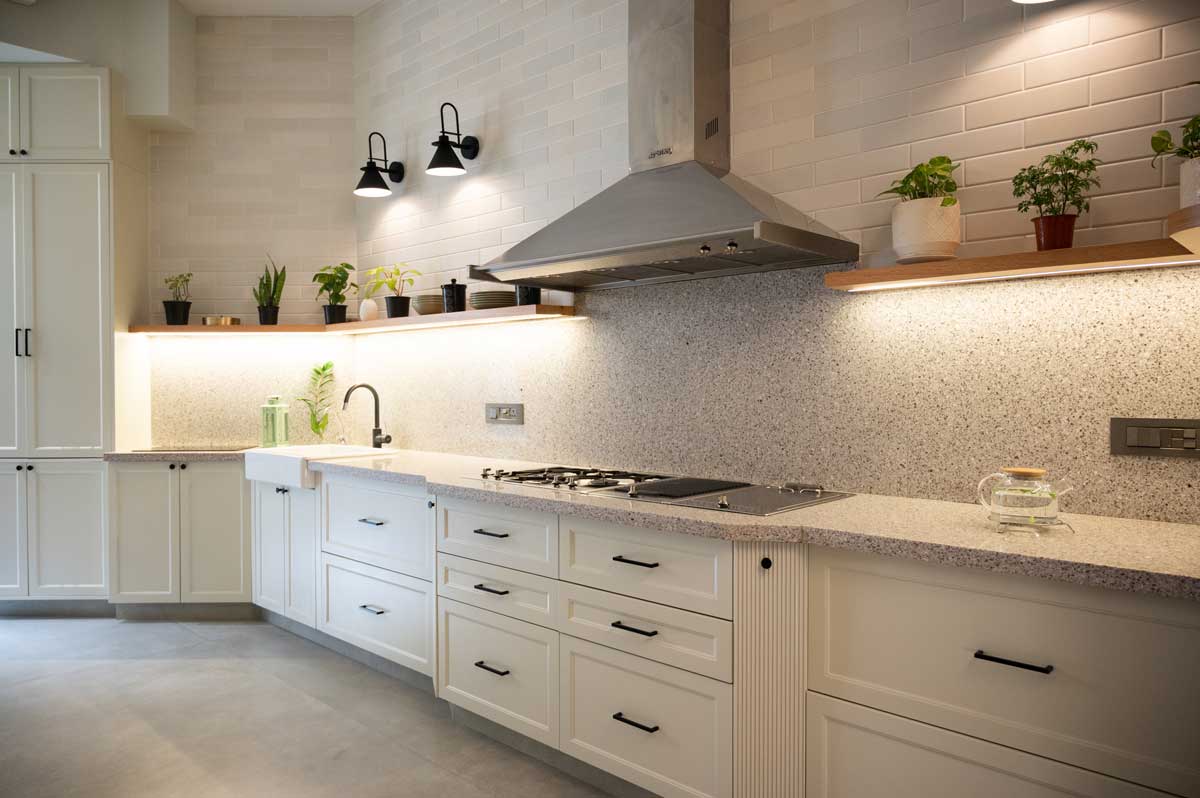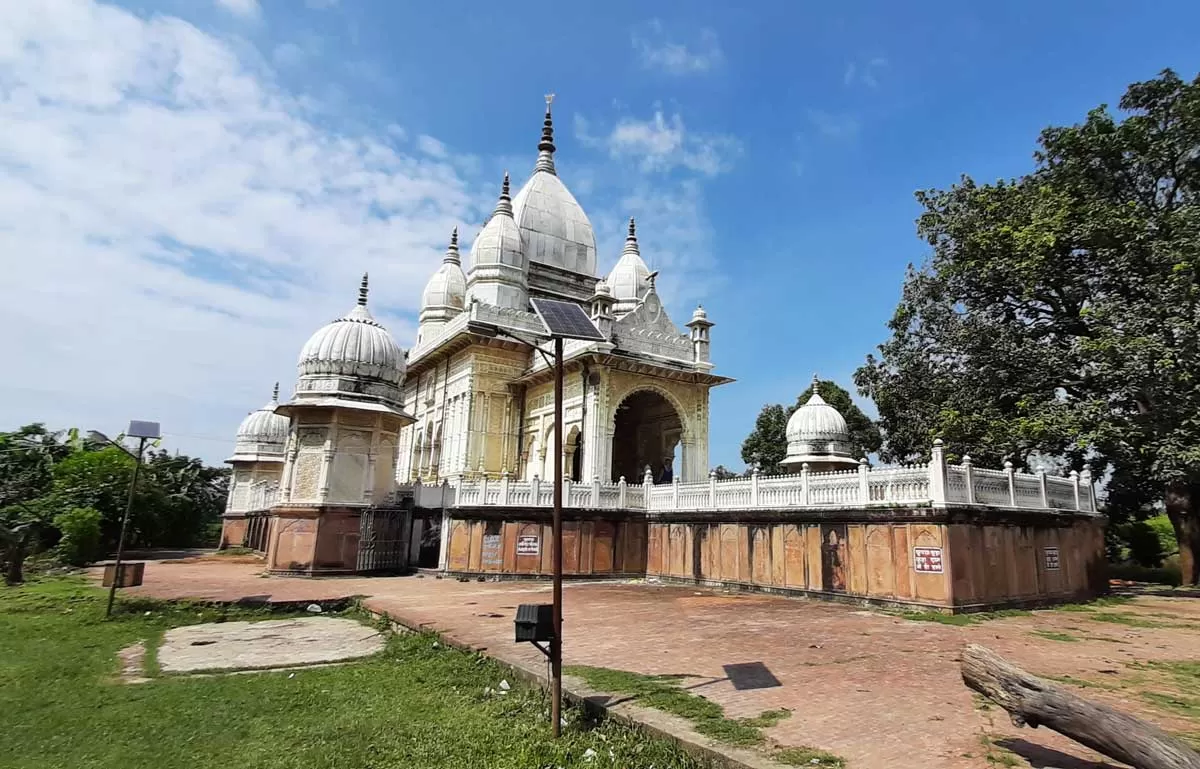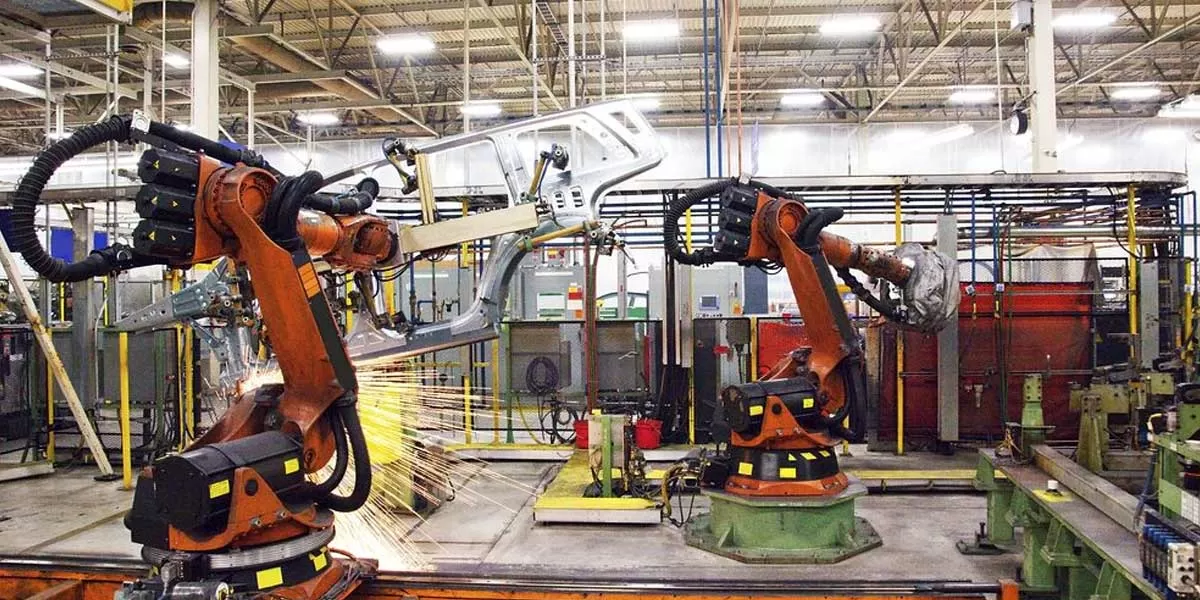The Indian modular kitchen prioritises functionality, aesthetics, and customisation, transforming the space into a multifunctional hub that complements the overall theme of the home.So, what would make for a perfect design process when creating modular kitchens?
The modular kitchen market in India is experiencing remarkable growth. According to recent reports, the market is projected to expand from US$ 3.67 billion in 2023 to US$ 10.91 billion by 2028, with a compound annual growth rate (CAGR) of 24.36 per cent during the period from 2023 to 2028. In recent years, the Indian kitchen market has emphasised modern designs and comfort. It is important to note that customers no longer perceive the kitchen as a standalone unit but rather as a multifunctional space for socialising, relaxation, and creativity.
So, what would make for a perfect design process when creating modular kitchens?
Approaching the design process
The core part of designing modular kitchens lies in planning.
Highlighting the factors that should be considered while designing a modular kitchen, Rahul Mistri, Founder & Principal Designer, Open Atelier Mumbai, points out to functionality as vital. He adds, “A well-designed layout should maximise efficiency by strategically placing appliances, work surfaces, and storage units. This ensures easy access and smooth movement within the space. Also, efficient planning is essential to maximise the available space. This involves careful analysis of the kitchen’s dimensions, layout, and structural constraints.” He points out to creating a mood board as a helpful tool in the design process. “This allows you to visualise the desired look and feel of the space by collecting images, colour swatches, material samples, and inspirational references. Furthermore, it is crucial to consider the home’s overall theme when designing a modular kitchen. The kitchen should complement the surrounding spaces’ style, colour palette, and ambience for a cohesive and harmonious design.
On her part, Meghana Nimmagadda, Founder & CEO, Designtales, says, “When crafting modular kitchens, one must carefully deliberate on space optimisation, ergonomics, lighting, ventilation, material selection, and maintenance. Meticulous attention must also be paid to electrical and plumbing arrangements.”
Functionality, efficiency, and aesthetic appeal are what Ritu Goregaoker, Design Director, GA Design, keeps in mind. “Planning the space, keeping in mind the work triangle, and optimising storage with smart solutions like pull-out racks, corner units, and vertical dividers,” she adds, saying that lighting plays a vital role in creating a functional and inviting kitchen – task lighting under cabinets and above work areas for focused lighting during food preparation are important. Also important is proper cross-ventilation with windows or vents to promote fresh air circulation.
To ensure optimal functionality and user experience, Sukriti Sharrma, Partner, Plüsch, mentions that it is crucial to thoroughly understand the client’s specific requirements for their kitchen space. “This involves identifying the desired appliances to incorporate and consider the individual needs of the entire family, including their storage and design preferences.” Her approach involves analysing how our clients currently utilise their existing kitchens to enhance their experience in a new home.”
Listing factors to ensure optimal functionality and user experience, Anjali Shah, Kitchen Stylist, Furniture & Industrial Designer & Founder, The Kitchen Artisan, mentions: “Number of members in the family; who uses the kitchen; is the kitchen mostly dependent on housekeepers, or is the owner the end user; the height of the cabinets to ensure everyone can reach them; and zone-wise division of sinks, and cabinets.”
Meeting User Needs and Preferences
Want to create a well-designed and functional modular kitchen that meets the needs and preferences of the users? Kushagra Awasthi, Founder, Furnish Your Dream, offers a step-by-step approach with key considerations:
Space analysis: Understand the dimensions and limitations of the kitchen area.
Functionality and workflow: Design based on the work triangle principle for efficient movement.
Ergonomics: Ensure comfortable use with proper countertop height and easy access.
Storage optimisation: Design cabinets, drawers, and shelves for efficient storage.
Material selection: Choose durable and easy-to-clean materials.
Appliance integration: Consider sizes, power requirements, and placement.
Lighting and ventilation: Incorporate ample lighting and proper ventilation.
Electrical and plumbing considerations: Plan outlets, switches, and connections.
Safety measures: Include grounding, circuit protection, and spacing.
Aesthetics and style: Choose a design theme and coordinate finishes.
Functionality and aesthetics
Modular kitchens offer a variety of designs and finishes, allowing homeowners to get a kitchen suited to their taste and preferences. They are typically designed based on the work triangle principle, ensuring a smooth workflow between the sink, cooktop, and refrigerator. This arrangement minimizes unnecessary movements and enhances efficiency while working in the kitchen.
Goregaoker says, “They also allow for easy upgrades and replacements of individual components, enabling flexibility and making it easier to add or remove elements as needed.”
Nimmagadda adds, “Their intelligently designed modules maximise storage space and ensure efficient organisation. Moreover, the seamless integration of sleek finishes, elegant materials, and customisable elements creates a visually appealing and harmonious culinary space.”
Agreeing that modular kitchens offer a perfect blend of functionality and aesthetics, Mistri says, “On the functional side, they provide precise and customised options, efficient workflow, ample storage solutions, and easy maintenance, ensuring a practical and organised kitchen space. In terms of aesthetics, modular kitchens offer design flexibility, a sleek and contemporary appearance that matches the home’s overall theme, and the ability to upgrade or change components easily.” This combination of functionality and aesthetics makes modular kitchens highly desirable as they enhance both the kitchen’s usability and visual appeal, catering to homeowners’ unique preferences and needs.
Modular kitchens are easier to install and require less on-site work, saving time and labour costs. However, given the unique character of every new kitchen, it can be challenging to articulate its essence.
Sharrma shares, Our approach strives to achieve a balance between aesthetics and practicality by employing various strategies. For instance, we prioritise both functionality and visual appeal by concealing chimneys so that the appliance blends seamlessly into the overall design. Even when incorporating freestanding elements, we use creative techniques to enhance their visual appeal, resulting in a functional yet aesthetically pleasing kitchen space.” When it comes to finishes, Plüsch offers a wide range of options that combine practicality with visual aesthetics, allowing for beautiful kitchen spaces without compromising functionality.
On her part, Shah says, “Zones in kitchens are split in a way that they are both aesthetically pleasing and functional.” Depending on the zones, different factors are given importance. For example, when installing a fridge and hob, practicality is crucial. Dry areas such as pantry storage or countertops for keeping cutlery can prioritise aesthetics. To improve the overall aesthetics of the kitchen, several colour palettes are utilised instead of monotonous wooden laminates and pastels, offering solid colours.
All-in-all, modular kitchens provide functional and aesthetically pleasing spaces that can be customised, easily maintained, and updated while enhancing the value and appeal of homes.
In comparison with semi-modular kitchens…
In comparison with semi-modular kitchens, modular kitchens provide a higher level of customisation and design flexibility.
Nimmagadda explains that semi-modular kitchens impose constraints on customisation options, while fully modular kitchens offer a blank slate for designers. According to Goregaoker, modular kitchens offer a wide range of options for cabinet styles, finishes, materials, and accessories, enabling clients to meet their specific preferences and requirements. Sharrma highlights the custom-made approach of modular kitchens, built off-site to eliminate on-site inconveniences.
Ashok Singh Jaunapuria, Managing Director & CEO, SS Group India, emphasises that modular kitchens optimise space and provide clever storage solutions, saving time and money with faster installation. Shah points out the precision and durability issues of semi-modular kitchens.
Cabinets are installed first using PVC legs for appropriate weight distribution and minimal space wastage. They are made from marine ply, ensuring no termite issues, and are pre-laminated for easy cleaning. Overall, modular kitchens are hassle-free and durable compared to semi-modular kitchens.
The lifespan
The lifespan of modular kitchens can vary depending on factors such as the quality of materials used, maintenance, and usage patterns.
“High-quality materials like solid wood, stainless steel, or engineered stone countertops tend to be more durable than lower-grade materials,” says Goregaoker. He adds, “The construction of modular kitchens, the material used for the carcass, durable finishes, and appropriate hardware, also contributes to their durability.”
Generally, a well-constructed modular kitchen with durable materials can last anywhere from 10 to 20 years or more, says Nimmagadda. “Regular upkeep, proper cleaning, and addressing any repairs or replacements in a timely manner can help prolong its lifespan.”
On his part, Mistri shares that a well-built modular kitchen can last 5 to 10 years with proper care and maintenance. “However, with good detailing, planning, and maintenance practices suited to Indian households, one can extend the lifespan of modular kitchens.”
Agreeing that modular kitchen can last for approximately 10 years or more, Kushagra Awasthi, Founder of Furnish Your Dream, highlights their durability and maintenance. “Modular kitchens are built with high-quality materials like solid wood, laminates, and durable hardware, ensuring their longevity. They are also easy to maintain, as the materials are resistant to stains, heat, and moisture. By following manufacturer guidelines, regular cleaning, and addressing repairs promptly, the lifespan of a modular kitchen can be extended, keeping it in good condition over time.”
Cost-saving strategies
The costs of incorporating modular kitchens into building projects compared to traditional semi-modular kitchens can vary.
Sharrma from Plüsch, mentions that the cost of a kitchen can range from Rs 10 lakh to Rs 50 lakh or more, depending on factors such as internal cabinetry design intricacy, the extent of cabinetry required, and the choice of front finish. Shah of The Kitchen Artisan explains that the price range for modular kitchens varies from Rs 6-6.5 lakh to Rs 25 lakh, considering factors like brand and materials used.
“While modular kitchens have greater initial expenses due to their pre-fabricated units and customisation possibilities, the long-term cost advantages must be considered,” says Jaunapuri. “They save time and manpower during installation, leading to lower construction costs.” Additionally, their optimised space utilisation and built-in storage solutions can eliminate the need for extra cabinetry or renovations, resulting in cost savings over time.
Awasthi suggests several cost-saving strategies for designing modular kitchens. “It begins with setting a realistic budget and prioritising key elements or features. Efficient space planning and selecting standardised module sizes help avoid unnecessary expenses. Wise material selection, considering both cost and quality, is essential, along with value engineering to identify cost-saving opportunities without compromising functionality or aesthetics. Energy-efficient lighting solutions and fixtures can reduce energy costs in the long run. Considering long-term benefits and durability, investing in quality items can lead to lower maintenance and replacement costs.”
Nimmagadda emphasises that a tasteful pairing of oak finish and solid-coloured laminates can create a visually appealing and harmonious culinary space without relying on expensive materials like lacquered shutters.
Goregaoker suggests that modular kitchens, based on standardised module sizes, can save costs on customisations or alterations. By choosing materials wisely, homeowners can balance cost and quality, opting for more budget-friendly alternatives that offer similar aesthetics and functionality.
Mistri emphasises careful planning and design as crucial factors in cost optimisation for modular kitchens. Optimising the layout, minimising wasted space, and accurately cutting and fitting modular units can reduce material and construction costs. Collaborating with trusted brands can provide cost-saving advantages through competitive pricing and access to special offers on materials, appliances, and accessories.
Sharrma explains that the cost of a kitchen can vary significantly depending on factors such as internal cabinetry design intricacy, the extent of cabinetry required, and the choice of front finish. Factors like cabinet configuration and the selection of appliances, countertops, and sink taps also contribute to the total expenditure. By working closely with clients and providing expert guidance tailored to their unique needs, Plüsch ensures the best outcome for their kitchen investments.
On her part, Shah explains that modular kitchens offer flexibility in dismantling, changing, repairing, and shipping to a new site. The price range varies depending on the types of brands and materials utilised. “Cost-saving measures include investing more in hardware and civil work rather than finishes, such as using shutters with a soft closing mechanism and durable countertops. Opting for laminates for shutter finishes provides a good look without high expenditure.”
What’s trending!
Modular kitchens are becoming more social, with the kitchen and living areas blending. Kitchen islands with seating, breakfast bars, and open-plan layouts encourage interaction and create a welcoming atmosphere for family and guests.
Nimmagadda highlights the trend of open kitchens with open shelves or glass cabinets to showcase decorative elements, adding elegance and personal style. “This design approach creates a sense of openness and accessibility while avoiding a boxy look.”
Awasthi introduces innovative design trends and unique features for modular kitchens. He lists, “This includes integrating smart appliances and technology, hidden storage solutions, multi-functional workspaces, and unique lighting concepts.” These features enhance convenience, maximise storage capacity, and elevate the functionality and aesthetics of modular kitchens.
Goregaoker emphasises the integration of smart technology, mixing and matching different materials for visual interest, and promoting sustainability through eco-friendly materials and energy-efficient appliances. “Encouraging natural elements such as indoor herb gardens is also a practice promoted by their designs.”
Mistri discusses the incorporation of warmer drawers, built-in bars, island cookstoves, custom-built cooking and dining trios, and smart appliances in modular kitchen projects. “The blending of kitchen and living areas, mixing materials and textures, and promoting sustainability are additional trends observed in modular kitchen design.”
On her part, Sharrma highlights the level of innovation tailored to clients' budgets, including hidden cooktops, movable countertops, and bar counters, and advanced technologies for automation. “Their approach ensures a harmonious blend of functionality, aesthetics, and cutting-edge innovation.”
Shah mentions emerging technologies such as concealed hobs and downdraft ventilation chimneys, along with fixtures like pocket doors to enhance the user experience. And Jaunapuria identifies design preferences and trends among homebuyers, such as open-concept layouts, sleek and minimalist designs, and smart storage solutions.
The focus on sustainability and eco-friendly design has influenced modular kitchen trends to a great extent. It also reflects a growing awareness of environmental responsibility in kitchen design.
- SHRIYAL SETHUMADHAVAN
Global Trends
There are several global trends in modular kitchen design that have been inspiring and influential. Kushagra Awasthi, Founder, Furnish Your Dream, lists some of these:
Minimalist design
Open shelving and display
Smart technology integration
Sustainable materials
Mixed materials and textures
Bold colours and patterns
Multi-functional and flexible design
Open kitchen layout
These global trends in modular kitchen design showcase the evolving preferences of homeowners for functional, stylish, and environmentally conscious kitchen spaces.
Modular Kitchens: Enhancing Property Value
Modular kitchens contribute to the value proposition of a property by enhancing its aesthetic appeal, offering practicality and functionality, and ensuring long-lasting quality, which attracts potential buyers or tenants. Ashok Singh Jaunapuria, Managing Director & CEO, SS Group India, shares more on contributing to the overall value proposition of property and attracting potential buyers or tenants. “Modular kitchens significantly enhance the value proposition of a property, attracting potential buyers or tenants. They offer an elegant and attractive interior with sleek designs, sophisticated finishes, and customisation options, creating a positive first impression. These kitchens provide practicality and functionality through effective storage solutions and optimised layouts, catering to the needs of buyers or tenants who prioritise efficiency. Moreover, their long-lasting functionality and durability, achieved through high-quality materials and skilled craftsmanship, appeal to those considering the property's long-term value and maintenance costs. Overall, modular kitchens contribute to the overall appeal and desirability of a property.”


















